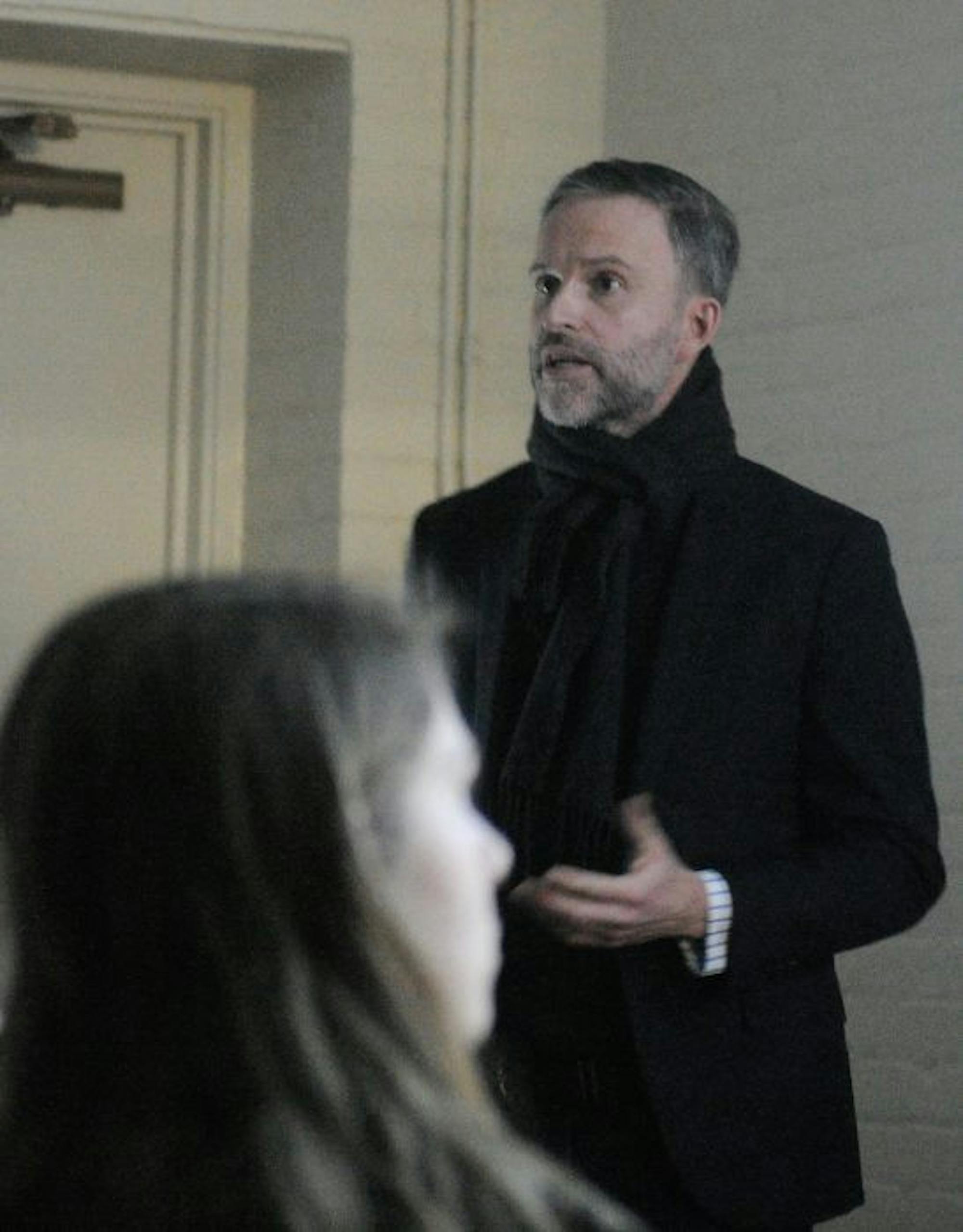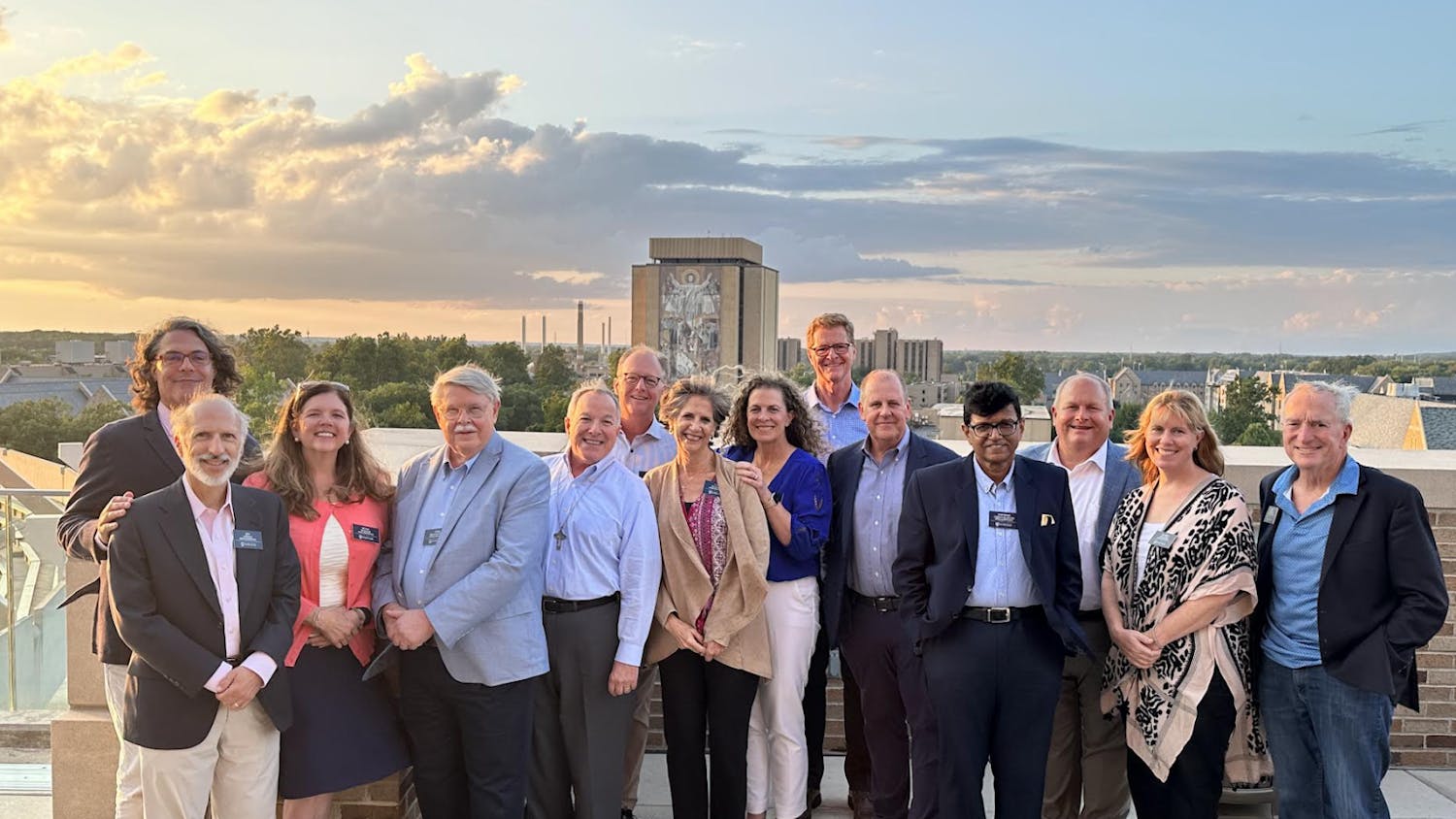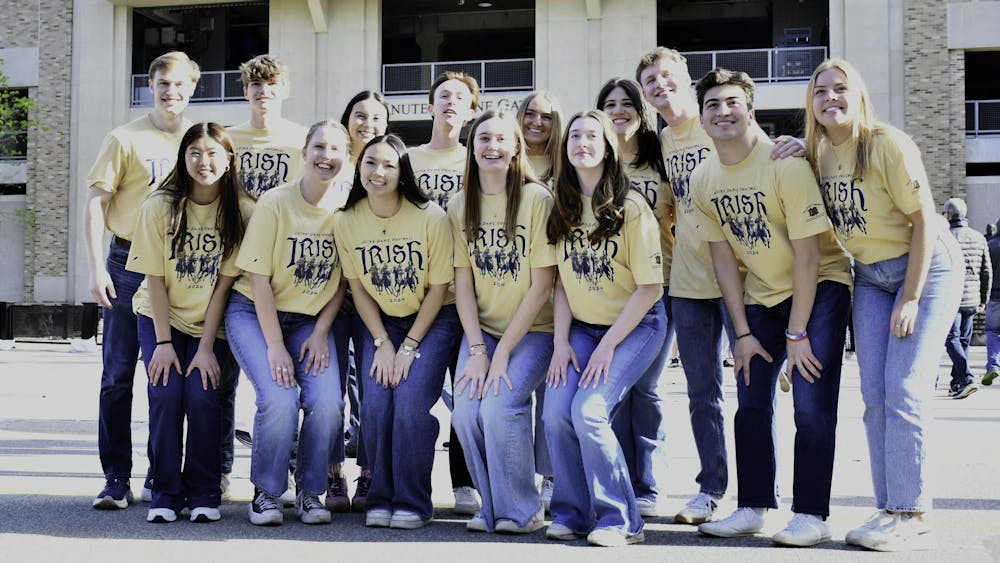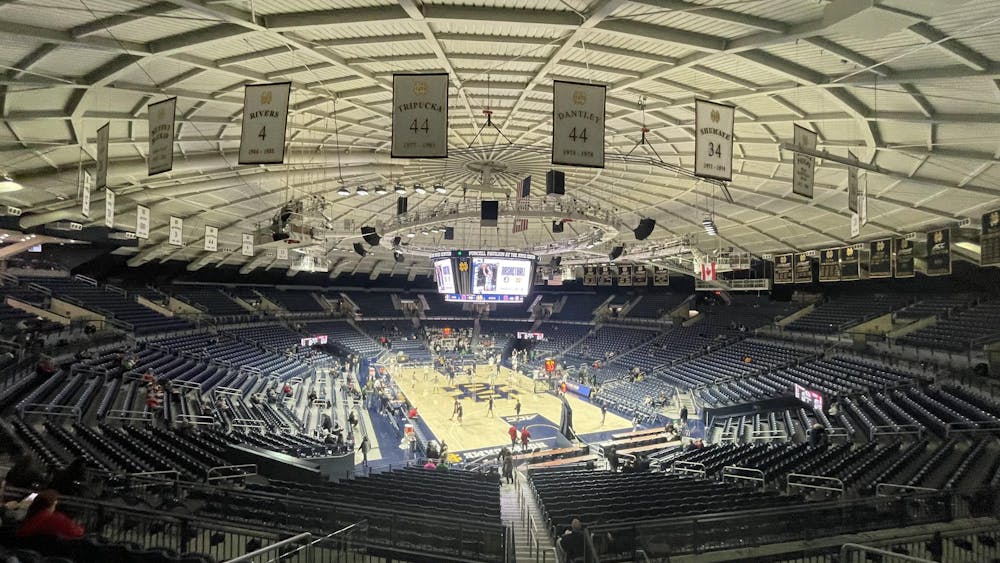Visiting design lecturer Brook Kennedy spoke about the value of drawing from the environment for ideas in the field of industrial design Monday during a talk sponsored by the Art, Art History and Design program at Notre Dame.
Kennedy, an associate professor of industrial design at Virginia Tech, said his work primarily focuses on solving problems through natural solutions.
“My central research question now is how can biology play a role in informing unique design solutions that support … environmental solutions,” he said.
While there are many terms for the type of biology-based design he practices, Kennedy said “bio-inspiration” sums the technique up nicely.
“I favor bio-inspiration because it’s the most inclusive, it’s the most broad and it sort of covers a mix,” Kennedy said. “That’s basically just design that’s somehow inspired by a natural system.”
Kennedy said he returned to this way of thinking after working at OXO — a manufacturer of household and office supplies that is known for the design of its fruit and vegetable “swivel peeler” design — for several years, during which time he played a large role in starting a line of products designed around young children, called OXO Tot. However, Kennedy said he eventually found that he wanted to transition back to solving large-scale problems, such as water shortage throughout the world.
“This was sort of a turning point in my career when I wanted to go back to an academic setting with a little more freedom to try to understand or look for potential ways of solving problems.”
Kennedy said bio-inspiration has led to “essentially a collar which replicates what a woodpecker does naturally to help prevent concussions in sports,” as well as his own design of a “macronaut,” which he described as a “little magnifying glass for the front of your smartphone.” This small device, he said, allows one to take extremely close-up, high definition photos of something with just a smartphone.
Kennedy said the macronaut even has benefits in the health care world, as it can help to zoom in on superficial health issues, such as skin blemishes, for faster diagnoses.
Swiss electrical engineer George de Mestral, who invented Velcro, inspires Kennedy, he said, as the invention of Velcro came about through bio-inspiration. Kennedy said de Mestral was fedup with burrs sticking to his clothing and his dog’s fur when he realized he could replicate the hooks that caused these burrs to stick to fabric for a productive cause.
In addition to the macronaut, Kennedy said he developed a new form of 3D printing, known as Corrugated FDM 3D printing, after drawing inspiration from the layers in clamshells. According to the art department’s website, Virginia Tech “recently filed an international utility patent application” for this particular invention of Kennedy’s.
Another project Kennedy described his work on is the synthesis of a material that reflects the water-wicking qualities of leaves and other materials found in nature, such as lily pads. Kennedy said this idea struck him when he noticed how many people tried to keep their bicycle seats dry during rainstorms through the use of plastic bags. College students, he said, could particularly benefit from bike seats made with material that draws from the water-resistant qualities of these leaves.
Whether it was with OXO or through bio-inspiration, in each design capacity Kennedy has worked, he said, there is one unifying factor: Coming up with a design for a product, and subsequently testing that design, is never the result of a simple formula.
“There’s a big backstory to design,” Kennedy said. “For everything that comes out onto the market, there’s a lot of hard work that goes into it.”













